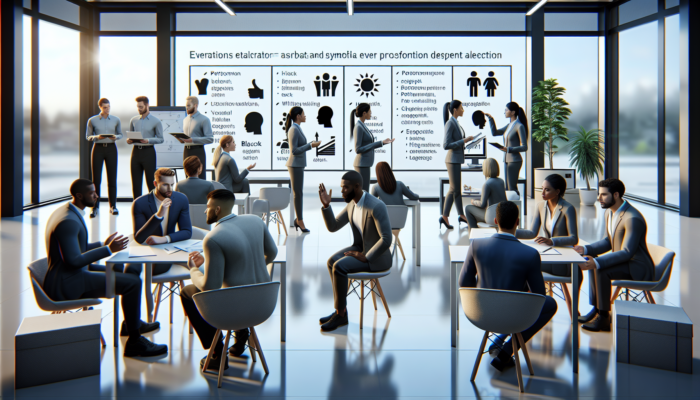Last Updated on 04/11/2025 by Admin
Discovering the Transformative Role of Virtual Reality in Hearing Loss Rehabilitation
Understanding the Concept of Virtual Reality and Its Diverse Applications
Virtual reality (VR) is an innovative technology that delivers an immersive experience, seamlessly connecting the digital world with the physical realm. In healthcare, particularly within auditory training, VR offers revolutionary simulations that recreate a multitude of soundscapes, proving to be an indispensable resource for individuals experiencing hearing loss. This cutting-edge technology amalgamates sophisticated hardware and software to generate interactive experiences, which can range from authentic auditory settings to imaginative scenarios. A spectrum of VR technologies is currently employed in hearing loss therapy, including:
- Head-Mounted Displays (HMDs)
- Spatial Audio Technologies
- Gesture Control Interfaces
- Interactive VR Software for Auditory Training
- Wearable Sensors for Monitoring
- Gamified VR Experiences
- Multisensory Integration Tools
This extensive variety of technologies empowers users to engage with sound in unparalleled ways, creating significant opportunities for effective auditory training and rehabilitation.
Understanding the Multifaceted Nature of Hearing Loss
Hearing loss is a multifaceted condition impacting millions globally, stemming from various causes such as aging, prolonged exposure to loud sounds, and genetic predispositions. It manifests as either partial or total hearing impairment, profoundly affecting an individual’s ability to communicate effectively. The emotional and social repercussions of untreated hearing loss can be profound, often resulting in feelings of isolation and a reduction in quality of life. Prompt intervention is essential to tackle hearing loss, as it plays a crucial role in preserving social connections and enhancing overall well-being.
With advancements in technology and therapeutic methods, numerous individuals can now effectively manage their hearing loss, allowing for increased participation in daily activities. Gaining insight into the nuances of hearing loss and recognising its effects is a critical initial step toward discovering innovative solutions, such as VR technology.
Examining the Collaboration Between VR and Auditory Skill Enhancement
The synergy between VR and auditory skills training presents a revolutionary approach for those experiencing hearing loss. VR fosters immersive environments that users can explore, simulating real-world scenarios that may present challenges in their daily lives. For example, a participant may refine their skills in comprehending speech amidst the ambient noise of a crowded café or distinguishing various sounds in a nature-rich outdoor context. These controlled environments significantly enhance the rehabilitation process by offering immediate feedback and a secure space for practice.
These immersive experiences can be tailored to meet individual requirements, rendering VR a flexible and adaptable resource in auditory training. As users engage with these environments, they not only hone their auditory skills but also build confidence in their communication abilities. This progressive approach solidifies VR’s position as a vital component in the dynamic field of hearing rehabilitation.
In What Ways Does VR Dramatically Enhance Hearing Rehabilitation?
What Mechanisms Underpin VR’s Effectiveness in Hearing Therapy?
The mechanisms by which VR enhances hearing therapy are deeply embedded in its ability to replicate a vast array of auditory environments and challenges. By repeatedly exposing users to varied soundscapes, they can train their auditory processing capabilities, resulting in gradual improvements in sound detection and interpretation. VR platforms can be tailored with specific auditory exercises that mirror real-life listening scenarios, such as identifying a friend’s voice amidst a crowded venue or determining the source of a sound.
This simulation creates a safe and controlled space for users to explore their hearing abilities without the pressures associated with real-world environments. For instance, a participant may practice differentiating between various frequencies or adjusting to volume fluctuations within a virtual setting that mimics a lively market scene. Over time, this consistent practice leads to notable advancements in auditory skills, equipping users with essential tools for everyday interactions.
Harnessing the Advantages of Immersive Sound Environments
Immersive sound environments within VR have the potential to transform the rehabilitation experience for individuals facing hearing loss. These auditory landscapes are meticulously crafted to replicate authentic auditory experiences, providing users with a diverse range of sounds to interact with. By immersing themselves in these dynamic settings, users become more adept at responding to auditory cues and nuances that they might otherwise overlook.
A significant benefit of these immersive environments is their capacity to engage users throughout the rehabilitation journey. Many users find the experience enjoyable and motivating, which is critical in encouraging regular practice. Moreover, these soundscapes can be customised to target specific challenges faced by the user, whether that involves practising in noisy environments or focusing on particular frequencies that may be challenging to perceive.
Ultimately, the benefits of immersive sound environments extend beyond mere skill enhancement; they empower users by helping them reclaim their auditory experiences and substantially improve their quality of life.
Is VR Capable of Replacing Conventional Hearing Aids?
While VR presents innovative methodologies for auditory training, it should not be regarded as a replacement for traditional hearing aids. Rather, VR serves as a complementary tool that enriches the overall auditory experience. Hearing aids play a crucial role in amplifying sound for individuals with hearing loss, facilitating improved sound perception in real-time situations.
Conversely, VR focuses on training and rehabilitation, aiding users in enhancing their auditory skills through interactive practice. By incorporating VR into their rehabilitation strategies, users can experience the advantages of both technologies. For instance, while a hearing aid supports daily listening scenarios, VR can offer specialised auditory training that addresses specific challenges, enabling users to navigate complex sound environments with increased proficiency.
In conclusion, VR and hearing aids can operate synergistically, providing a comprehensive strategy for managing hearing loss and equipping users with a balanced mix of auditory support and training.
Insights from Professionals Regarding the Integration of VR in Hearing Loss Skill Development
Highlighting Practical Applications of VR in Hearing Rehabilitation
The utilisation of VR in hearing rehabilitation is gaining traction, with numerous practical applications showcasing its efficacy. Various programmes and initiatives around the globe have seamlessly integrated VR technology to enhance auditory training, yielding promising outcomes for users. These successful implementations underline the substantial impact VR can have on individuals with hearing loss and serve as valuable case studies for further exploration. Noteworthy examples include:
- A VR programme in the United States that simulates social interactions to assist users in practising speech comprehension in noisy environments.
- A project in Europe employing VR to aid children with hearing impairments in enhancing their auditory processing skills through interactive storytelling.
- Clinical trials conducted in Australia revealing significant improvements in auditory abilities among participants engaged in VR training compared to traditional methods.
- A programme in Canada that combines VR with hearing aids to provide immersive training scenarios tailored to individual hearing profiles.
These case studies illustrate how VR can be effectively integrated into rehabilitation programmes, providing users with engaging and practical training opportunities that lead to measurable enhancements in their auditory skills.
Implementing Effective Strategies for Integrating VR into Hearing Therapy
Successfully incorporating VR into hearing therapy necessitates thorough planning, appropriate resource allocation, and strategic execution. To facilitate a smooth integration of VR technologies into existing programmes, healthcare professionals and therapists can follow actionable steps tailored to their specific contexts. Key steps include:
- Evaluating the needs of the user population to customise VR experiences effectively.
- Selecting the appropriate VR software that aligns with therapeutic goals and user capabilities.
- Training therapists and staff on operating VR systems and personalising experiences for individual patients.
- Integrating VR sessions into existing rehabilitation programmes, ensuring they complement traditional therapy methods.
- Monitoring user progress and adapting VR exercises based on feedback and observed advancements.
By following these steps, therapists can cultivate an environment where VR serves as a pivotal tool for enhancing auditory skills and improving the overall rehabilitation experience.
Providing Expert Insights on the Future of VR in Auditory Training
The future of VR in auditory training appears exceptionally promising, as experts anticipate advancements in technology will lead to increasingly personalised and effective rehabilitation programmes. As VR evolves, it will facilitate the creation of tailored auditory experiences that closely align with individual users’ hearing profiles and rehabilitation objectives. Innovations such as enhanced sound simulation, real-time feedback, and gamified training scenarios will revolutionise the approach to hearing loss.
Furthermore, the integration of artificial intelligence could enable VR systems to adjust in real-time to user performance, making the training process even more dynamic and responsive. This personalised approach not only enhances skill acquisition but also promotes user engagement, motivating individuals to practice consistently. As the field of auditory training advances, VR is poised to become a foundational element in innovative rehabilitation strategies, equipping individuals with hearing loss with the essential tools they need to thrive.
Exploring the Psychological Benefits of VR in Hearing Loss Training
The psychological effects of hearing loss can be significant, often resulting in frustration, anxiety, and social withdrawal. VR offers unique psychological advantages that enhance the overall experience of hearing loss training. One of the most notable benefits is the creation of a secure and controlled environment where users can refine their auditory skills without the fear of judgement or failure. This setting encourages exploration and experimentation, which can lead to heightened motivation to engage in rehabilitation.
Moreover, VR can help alleviate anxiety associated with real-world listening scenarios. By simulating various environments, users can build confidence in their auditory capabilities, translating to improved performance in social interactions. As users grow more comfortable navigating different soundscapes, they experience an increased sense of empowerment and control over their hearing loss.
Ultimately, the psychological benefits of VR extend beyond skill development; they foster resilience and adaptability, equipping individuals with the mental tools necessary to confront the challenges linked to hearing loss.
Evaluating the Cost-Effectiveness of VR Solutions for Hearing Therapy
The evaluation of VR solutions for hearing therapy often raises questions regarding cost-effectiveness. While the initial investment in VR technology may seem considerable, a comprehensive analysis reveals that the long-term benefits can outweigh the costs. By incorporating VR into hearing rehabilitation, healthcare providers can deliver more engaging and effective training programmes, potentially leading to quicker advancements in auditory skills and a reduced reliance on ongoing therapy sessions.
Additionally, when considering the costs associated with untreated hearing loss—such as social isolation, diminished quality of life, and potential health complications—investing in VR solutions may ultimately prove to be a financially sound strategy. The mental health benefits stemming from increased confidence and social engagement further enhance the overall value of VR therapy. As this technology continues to evolve and become more widely accessible, its cost-effectiveness is likely to improve, making it a viable option for a broader range of individuals seeking support for hearing loss.
Examining VR Applications for Different Types of Hearing Loss
Addressing Sensorineural Hearing Loss Using VR Technology
Sensorineural hearing loss, often resulting from damage to the inner ear, presents distinct challenges that VR technology can effectively address. By simulating a variety of sound frequencies and intensities, VR can help individuals with sensorineural hearing loss retrain their auditory responses. For instance, VR applications can generate soundscapes that progressively increase in complexity, allowing users to practice distinguishing between various frequencies and recognising speech amidst background noise.
This gradual exposure to increasingly challenging auditory environments enables users to acclimatise to sounds they may find difficult to perceive in reality. Furthermore, the feedback provided within these simulations allows users to monitor their progress and adjust their training techniques accordingly. As a result, VR becomes an essential tool for enhancing the auditory skills of individuals with sensorineural hearing loss, ultimately improving their communication abilities and overall quality of life.
Utilising VR Therapy for Conductive Hearing Loss
Conductive hearing loss, often caused by issues in the outer or middle ear, can also benefit from VR therapy. Through targeted sound therapy, VR can recreate environments that focus on enhancing sound conduction, which is vital for individuals experiencing this type of hearing loss. For example, VR applications can create scenarios where specific sounds are amplified or filtered, enabling users to practice recognising these sounds in controlled settings.
This tailored approach not only aids in auditory skill development but also enhances users’ understanding of how sound travels and interacts within various environments. By engaging in immersive sound training, individuals with conductive hearing loss can improve their auditory processing capabilities, facilitating effective communication in daily situations. The integration of VR into therapy for conductive hearing loss highlights its versatility and effectiveness across a range of auditory challenges.
Combining VR Interventions for Mixed Hearing Loss
Mixed hearing loss, which encompasses both sensorineural and conductive components, necessitates a comprehensive treatment strategy that VR can provide. By combining various therapeutic methodologies, VR can effectively address the unique challenges posed by mixed hearing loss. VR interventions can be designed to simulate auditory scenarios that cater to the specific deficits associated with both sensorineural and conductive hearing loss, offering a holistic training experience.
For example, a participant might engage in a VR programme that emphasises frequency recognition while simultaneously undertaking sound conduction exercises. This multifaceted approach allows users to develop a deeper understanding of their auditory difficulties and acquire skills to compensate for them. Moreover, the immediate feedback inherent in VR platforms enables users to track their progress, fostering a sense of achievement and motivation as they navigate their hearing rehabilitation journey.
Enhancing Training for Central Auditory Processing Disorders with VR
Individuals diagnosed with central auditory processing disorders (CAPD) experience challenges in processing sounds, despite having normal hearing abilities. VR can significantly enhance auditory training for those with CAPD by providing immersive environments that focus on improving sound recognition and comprehension. Through customised VR exercises, users can practice distinguishing between competing sounds, following conversations in noisy environments, and interpreting auditory cues.
The interactive elements of VR promote active engagement, which is essential for effective learning and skill development. By replicating real-life situations, users can build their confidence in processing auditory information, leading to enhanced communication skills. As they interact with these immersive experiences, individuals with CAPD are empowered to overcome the difficulties they encounter in auditory processing, resulting in improved outcomes during their daily interactions.
What Challenges Exist in the Utilisation of VR for Hearing Loss Treatment?
Overcoming Technical Barriers to VR Implementation
The integration of VR technology in hearing therapy presents significant challenges. One of the primary technical barriers is the need for high-quality VR equipment and software. The initial costs associated with acquiring VR hardware, such as headsets and audio systems, can be considerable, posing a challenge for healthcare providers and institutions seeking to adopt this technology in their practices.
Moreover, incorporating VR into existing healthcare systems necessitates meticulous planning and collaboration. Many providers may lack the technical expertise required to implement and maintain these systems effectively. Training staff members to operate VR technology and develop relevant content is essential but can be both time-consuming and costly. Addressing these technical challenges is crucial for ensuring that VR can be widely adopted as a viable option for hearing loss rehabilitation.
Tackling Accessibility Issues in VR Therapy
Accessibility represents another critical concern regarding VR therapy for hearing loss. The financial burden of VR systems can be prohibitive for many individuals, particularly those already facing economic hardships due to their hearing loss. Ensuring that VR solutions are accessible to all who need them is essential for achieving equitable healthcare outcomes.
Furthermore, the specialised training needed to use VR technology can present barriers for both healthcare professionals and patients. Not all therapists may have access to the necessary resources to learn how to effectively integrate VR into their practice. This lack of accessibility can result in disparities in the quality of care provided to individuals with hearing loss. Addressing these challenges through targeted initiatives and community support programmes is critical in expanding access to VR-based hearing therapy.
Can VR Induce Discomfort or Side Effects in Users?
While the potential benefits of VR are substantial, some users may experience discomfort or side effects during their therapy sessions. Common issues include motion sickness, eye strain, and disorientation, which may arise from prolonged use of VR headsets or poorly designed experiences. Ensuring a positive user experience is essential for maintaining engagement and achieving desired results in therapy.
To alleviate discomfort, developers and therapists should prioritise user comfort by designing VR experiences that are intuitive and user-friendly. Providing guidance on how to use VR technology safely can also help users adapt to this new medium. By proactively addressing these concerns, healthcare providers can create a more accessible and effective VR therapy environment that minimises the risk of adverse effects.
Assessing the Effectiveness of VR in Treating Hearing Loss
The effectiveness of VR for treating hearing loss remains an area of ongoing research, with varying results reported across studies. While many users have documented significant improvements in their auditory skills through VR training, the long-term benefits and optimal implementation strategies are still under exploration. Some research indicates that VR can enhance auditory processing and communication skills, while others call for further investigation into the most effective methodologies for integrating VR into therapy.
As more healthcare providers embrace VR solutions, accumulating data will yield greater insights into its effectiveness for various types of hearing loss. Understanding the optimal application of VR technology in therapy is vital for maximising its benefits and providing customised treatment plans for individuals experiencing hearing loss.
Fostering User Engagement and Motivation in VR Therapy
Maintaining user engagement and motivation in VR therapy is critical for the success of rehabilitation efforts. The immersive quality of VR experiences can evoke excitement and curiosity, significantly boosting users’ motivation to participate in their training. However, sustaining consistent engagement can be challenging, as individuals may lose interest over time or find the technology overwhelming.
To counteract disengagement, therapists can implement strategies to make VR sessions more interactive and rewarding. Customising experiences to align with users’ interests and integrating gamification elements can also enhance motivation. By fostering a supportive and engaging atmosphere, therapists can encourage users to practice consistently, ultimately leading to improved auditory skills and greater confidence in their capabilities.
Research-Backed Insights on the Benefits of VR in Training Hearing Loss Skills
In What Ways Does VR Enhance Auditory Processing Skills?
Research indicates that VR can substantially enhance auditory processing by immersing users in interactive sound environments that promote active listening and sound recognition. Engaging in these environments allows users to practice differentiating between sounds, thereby improving their ability to interpret auditory information. As users navigate intricate soundscapes, they develop the capacity to identify specific sounds amid background noise, a skill that is critical for effective communication.
Key research findings support the efficacy of VR in improving auditory processing skills, including:
- Studies revealing enhanced sound localisation skills among users participating in VR auditory training.
- Research demonstrating improved speech recognition abilities in noisy environments following VR training sessions.
- Findings indicating increased brain activity associated with sound processing during immersive VR experiences.
- Evidence of sustained improvements in auditory skills long after completing VR training.
These findings underscore the potential of VR as a transformative tool in auditory training, assisting individuals with hearing loss in developing essential processing skills that enhance their communication capabilities.
How Does VR Strengthen Communication Skills Through Engaging Experiences?
Effective communication is fundamental to social interaction, and VR can significantly enhance communication skills for individuals experiencing hearing loss. By simulating real-life conversational scenarios, users can practice their ability to communicate effectively despite auditory challenges. For instance, VR environments can recreate contexts where users must engage in dialogue amidst noisy backgrounds, allowing them to refine their skills in interpreting speech and responding appropriately.
Through repeated practice in these realistic environments, users build confidence in their communication abilities, which can lead to improved interactions in their daily lives. Furthermore, the immersive nature of VR alleviates the anxiety often associated with social situations for individuals with hearing loss, enabling them to focus on their communication skills rather than their difficulties. Over time, enhanced communication skills foster increased social engagement and a better quality of life.
What Are the Long-Term Benefits of VR Therapy for Hearing Loss?
Long-term outcomes of VR therapy for individuals experiencing hearing loss are encouraging, indicating lasting improvements in auditory capabilities and overall quality of life. Many users report increased confidence in social situations, allowing them to engage more freely and actively within their communities. Additionally, the skills cultivated through VR training can lead to enduring changes in auditory processing, enabling individuals to navigate intricate listening environments with ease.
Moreover, the mental health benefits associated with enhanced communication and social interactions contribute to an improved overall quality of life. Users often experience heightened self-esteem and reduced feelings of isolation, which can be particularly beneficial for those who have grappled with the social implications of hearing loss. As research on VR therapy continues to expand, understanding these long-term outcomes will be crucial for refining approaches and maximising the effectiveness of auditory training.
Can VR Training Help Mitigate the Stigma Associated with Hearing Loss?
VR training has the potential to significantly contribute to reducing the stigma surrounding hearing loss. By providing a safe and supportive environment for individuals to practise their auditory skills, VR empowers users to build confidence in their abilities, encouraging them to engage more openly with others. As users become more adept at navigating communication challenges, they may feel less self-conscious and more inclined to partake in social interactions.
Furthermore, VR can foster greater awareness and understanding among family members, friends, and communities regarding the obstacles faced by individuals with hearing loss. By experiencing simulated scenarios that reflect these challenges, others can develop empathy and support for those navigating hearing loss. Collectively, these factors contribute to a gradual reduction in stigma, promoting a more inclusive environment for individuals with hearing loss.
Strategies for Seamlessly Integrating VR into Hearing Loss Rehabilitation Programs
How to Effectively Integrate VR into Existing Rehabilitation Programs
Integrating VR into established hearing loss rehabilitation programmes requires a strategic approach involving careful planning and execution. The first step is to assess the specific needs of the user population and identify how VR can enhance their current treatment plans. By pinpointing areas where VR can complement traditional therapy, healthcare providers can create a more comprehensive strategy for auditory rehabilitation.
The next critical aspect is selecting appropriate VR software that aligns with therapeutic objectives. The chosen software should address the unique challenges faced by users and offer tailored experiences that cater to their needs. Once the software is selected, therapists and staff must undergo training to proficiently operate the VR systems and deliver engaging experiences to users.
Finally, integrating VR sessions into existing rehabilitation programmes necessitates ongoing monitoring and assessment of user progress. Regular evaluations will enable therapists to adjust VR exercises to optimise outcomes, ensuring that users receive the most effective and personalised care throughout their rehabilitation journey.
Training Therapists for Effective Utilisation of VR Technology
Equipping therapists to use VR effectively is a vital aspect of successful integration into hearing rehabilitation programmes. This training should encompass familiarisation with the hardware and software utilised in VR systems, along with insights into how to tailor VR experiences to meet the individual needs of each patient.
Therapists should receive comprehensive training covering the technical aspects of VR, including the setup and operation of the VR equipment, as well as navigation of the software interface. Additionally, they should be educated on the therapeutic principles behind VR training, enabling them to design effective exercises that align with users’ rehabilitation goals.
Providing ongoing support and professional development is crucial for ensuring that therapists remain proficient in utilising VR technology. Regular workshops and training refreshers can keep therapists informed about the latest advancements in VR therapy and facilitate the sharing of best practices with colleagues, ultimately enhancing the overall quality of care provided to individuals with hearing loss.
Identifying Best Practices for Implementing VR in Hearing Rehabilitation
Implementing best practices for VR in hearing rehabilitation is essential to maximise the benefits of this innovative technology. Regular evaluations of patient progress should be conducted to ensure that users are making advancements in their auditory skills and to identify areas needing enhancement. These assessments can guide therapists in adjusting VR experiences to meet the evolving needs of users.
Customisation is another crucial element of best practices. Tailoring VR experiences to individual users’ challenges and preferences ensures that training remains relevant and engaging. This customisation may involve varying the complexity of sound environments or concentrating on specific auditory skills based on user feedback.
Lastly, providing continuous support and training for both patients and therapists is vital for maintaining engagement and success in VR therapy. Regular check-ins, feedback sessions, and opportunities for practice can foster a collaborative and supportive atmosphere, encouraging users to persist in their training journey.
Emerging Trends and Innovations in VR for Hearing Loss Treatment
Technological Advancements in VR for Auditory Training
The field of VR technology is rapidly evolving, with improvements anticipated to enhance its application in auditory training. Advancements in graphics and sound simulation are creating increasingly realistic and immersive environments, enabling users to engage more deeply with auditory training experiences. As technology progresses, we can expect the emergence of more user-friendly VR systems specifically designed for hearing rehabilitation, broadening access to a wider audience.
Future innovations may also include the integration of artificial intelligence, allowing VR systems to adapt in real-time to users’ performance and preferences. This level of customisation will elevate the training experience, providing users with targeted feedback and challenges aligned with their individual needs. As these advancements materialise, the potential for VR to revolutionise the field of hearing rehabilitation will continue to grow, establishing it as an essential resource for those experiencing hearing loss.
Exploring New Applications of VR in Hearing Therapy
As VR technology continues to evolve, new applications are emerging that will enrich the auditory training landscape. Personalised sound environments tailored to individual users’ hearing profiles can enhance the effectiveness of therapy, allowing for more targeted training experiences. These personalised approaches can help users practice in settings that closely mirror their everyday challenges, facilitating quicker skill acquisition.
Another exciting trend is the gamification of auditory training through VR, where users can engage in interactive and enjoyable experiences that make learning enjoyable. These gamified elements can foster greater motivation and participation in therapy, resulting in improved outcomes. Additionally, the integration of AI is expected to play a transformative role in customising VR experiences to cater to individual needs, making auditory training more efficient and effective. This combination of innovation promises to enhance the efficacy of VR in hearing therapy, ensuring that users receive the most personalised and engaging training possible.
The Role of VR in Preventive Hearing Care Initiatives
Looking to the future, VR is poised to play a pivotal role in preventive hearing care by providing educational tools and simulations designed to help individuals understand and protect their hearing before significant loss occurs. By crafting immersive experiences that demonstrate the effects of loud noises or the importance of regular hearing check-ups, VR can heighten awareness and encourage proactive measures to safeguard auditory health.
These educational applications empower individuals to make informed choices regarding their hearing health, ultimately lowering the risk of developing hearing loss in the future. By leveraging VR as a preventive tool, healthcare providers can instil a culture of awareness and accountability, motivating individuals to prioritise their hearing health as an integral aspect of their overall well-being.
Frequently Asked Questions About VR and Hearing Loss
What is the definition of virtual reality?
Virtual reality (VR) is a technology that creates immersive, interactive environments simulating real or imagined experiences, often utilised in training and therapy across various fields, including healthcare.
In what ways can VR assist individuals experiencing hearing loss?
VR can enhance auditory training by simulating diverse sound environments, allowing users to practise and improve their auditory skills within a controlled and engaging setting.
Which types of hearing loss can benefit from VR therapy?
VR therapy can benefit individuals experiencing sensorineural, conductive, mixed hearing loss, and central auditory processing disorders by offering customised auditory training experiences.
Are there any risks associated with the use of VR for hearing therapy?
Potential risks include discomfort, motion sickness, and eye strain, which can be managed through thoughtful design and user guidance during VR sessions.
Can VR serve as a replacement for traditional hearing aids?
No, VR is not a substitute for hearing aids; it functions as a complementary tool to enhance auditory training and rehabilitation efforts.
What psychological advantages does VR offer in hearing loss training?
VR can alleviate anxiety, boost confidence, and foster a supportive environment for practice, empowering individuals to feel more capable in their communication abilities.
How do therapists implement VR in hearing rehabilitation?
Therapists can implement VR by selecting suitable software, receiving training to use the technology effectively, and integrating VR sessions into existing rehabilitation programmes.
What long-term outcomes can be expected from VR therapy?
Long-term outcomes may include enduring improvements in auditory skills, increased confidence in social interactions, and an enhanced overall quality of life for individuals experiencing hearing loss.
Is VR therapy considered cost-effective?
While initial investments may be significant, the long-term benefits and reduced therapy costs may render VR a cost-effective solution for hearing loss rehabilitation.
What future trends can we anticipate in VR for hearing loss?
We can expect advancements in VR technology, personalised applications, gamification of training, and increased accessibility, all of which will enhance its efficacy in hearing rehabilitation.
Explore our journey on X!
The post VR for Training Hearing Loss Skills: A Universal Method appeared first on The Microsuction Ear Wax Removal Network.
The post VR for Training Hearing Loss Skills: A Universal Method appeared first on Healthcare Marketing Service.






